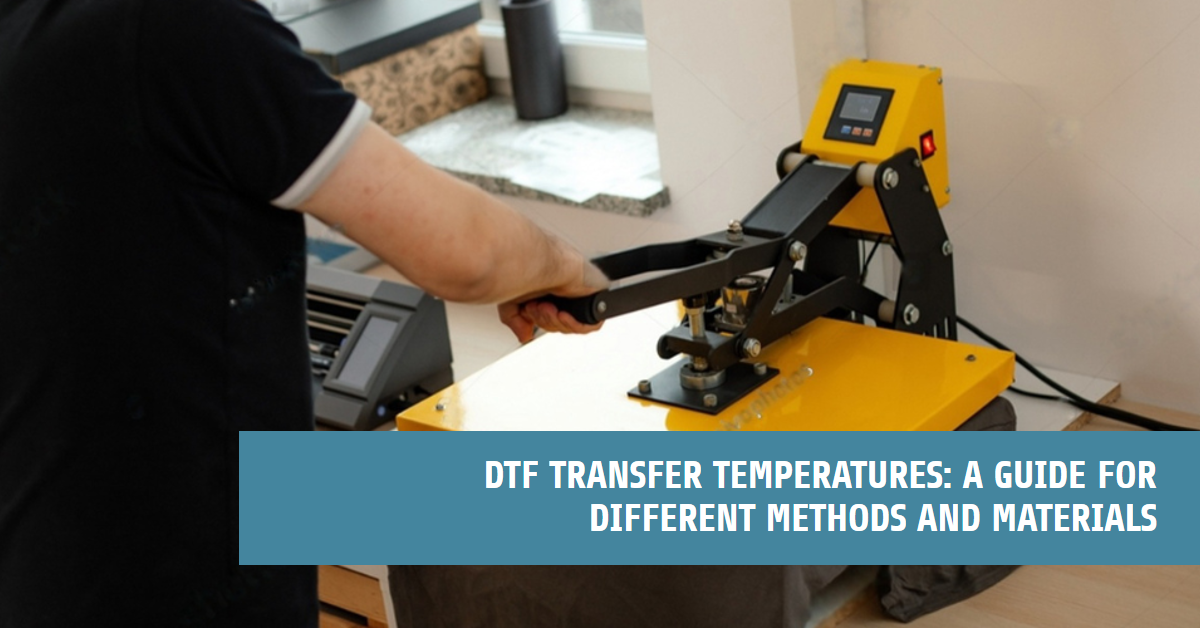Introduction
When it comes to DTF (Direct-to-Film) transfers, achieving the perfect temperature is your golden ticket to success. Whether you're a seasoned pro or just starting your DTF journey, understanding the ideal temperature settings for different methods and materials is crucial. In this article, we will break down the intricacies of DTF transfer temperatures to ensure your projects turn out flawlessly.
Understanding General Temperature Ranges:
Let's begin by exploring the general temperature ranges you need to be aware of when working with DTF transfers:
DTF Powder Melting Point: The DTF powder has a melting point that falls in the range of 110-125°C (230-260°F). This fundamental temperature range sets the stage for your entire DTF process.
Heat Press: If you're using a heat press, you'll want to set the temperature between 150-165°C (302-329°F). This method is our top recommendation for achieving professional results consistently.
Handheld Press: When using a handheld press, start with a lower temperature, around 150-160°C (300-320°F), and increase it gradually if necessary. Press firmly for approximately 20 seconds with substantial pressure.
Iron: While not the ideal choice due to uneven pressure and heat distribution, if you find yourself using an iron, begin at the lowest temperature setting and gradually increase it. Keep the iron in constant motion to prevent scorching and peel the transfer immediately after pressing.
Specifics for Different Methods:
Now, let's dive deeper into the specifics of each method:
Heat Press: This method stands out as the most recommended for achieving professional-grade results. Your specific heat press may have slightly different instructions, so always follow the manufacturer's guidelines. Generally, you'll want to set the temperature between 150-165°C (302-329°F) and apply medium to high pressure for 12-15 seconds.
Handheld Press: For handheld presses, the process begins with a lower temperature, typically around 150-160°C (300-320°F). Adjust the temperature as needed based on the material you're working with. Press firmly for about 20 seconds, ensuring the application of strong pressure.
Iron: As previously mentioned, using an iron for DTF transfers isn't ideal. However, if it's your only option, start with the lowest temperature setting and apply firm, short bursts of pressure while keeping the iron in constant motion. Remember to peel the transfer immediately after pressing.
Peeling Time:
Knowing when to peel your transfers is crucial to achieving the best results:
Heat Press and Handheld Press: In most cases, you can peel the transfer immediately after pressing while it's still hot. However, for thicker materials or if you desire stronger adhesion, waiting for 10-15 seconds before peeling may yield better results.
Iron: If you're using an iron, it's best to peel the transfer right away while it's still hot.
Adapting to Different Materials:
The type of material you're working with will affect your temperature settings:
| Material | Celsius | Fahrenheit |
| Cotton | 160-165°C | 320-329°F |
| Polyester | 150-155°C | 302-311°F |
| Polyester Blends | 150-155°C | 302-311°F |
| Nylon | 150-155°C | 300-310°F |
Bonus Tips for Perfect DTF Transfers:
Here are some additional tips to ensure your DTF transfers turn out perfectly:
Always perform a test transfer on a scrap piece of fabric before proceeding with your final project.
Consult the manufacturer's recommendations for the specific DTF film and DTF ink you're using.
Use a Teflon sheet on your heat press to prevent scorching and protect your transfers.
Preheat your press and materials to ensure even heat distribution.
Apply firm and even pressure during the pressing process.
Allow your transfers to cool completely before washing or handling them to ensure their durability.
By understanding and mastering the art of DTF transfer temperatures, you can take your projects to the next level and achieve outstanding results. Whether you're creating custom apparel, personalized gifts, or unique designs, these temperature guidelines will be your trusted companions on your DTF journey.

